#HistoricALX2U Virtual Activities and Tours
What is #HistoricAL2U?
Miss visiting your favorite Historic Alexandria sites? Looking for some fun historic activities to share with your kids at home? Let our staff bring history virtually to you!
Each weekday from March 23 to June 26, 2020, we shared new stories and content through #HistoricALX2U -- everything from virtual tours of the sites and museums to fun and educational activities. If you missed them the first time around, explore these tours and activities now.
- On #MakeItMonday enjoy hands-on activities, recipes, and coloring sheets for the whole family.
- Take virtual tours of our museums and sites on #TourTuesday.
- Learn more about Alexandria's rich archaeological heritage on #WaterfrontWednesday.
- #ThrowbackThursday dives deep into the historic files.
- Separate historic fact from fiction on #FactCheckFriday.
Here are some more ways to learn from home
Here are some other Educational Resources
#MakeItMonday
Alexandria or Belhaven?
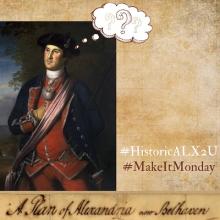
June 22, 2020
Is it Alexandria or Belhaven? In 1749 a young George Washington wasn’t sure what to call this new town, so on his survey he titled it “A Plan of Alexandria, now Belhaven.” Most 18th-century Alexandrians called the town ”Alexandria” while the more upper-class citizens with aspirations of gentility chose the fancier sounding “Belhaven.” Learn more about this age-old question and what maps can tell us.
Alexandria and Belhaven: A Case of Dual Identity. Alexandria Historical Society
My Wish for U.S.
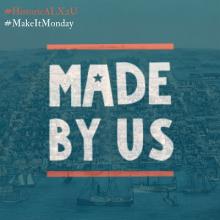
June 15, 2020
Historic Alexandria is partnering with Made by Us and dozens of other institutions to capture a vision for our nation that includes all voices. Our democracy has lasted longer than any other nation’s, but in many ways we have yet to reach our full potential. The good news: Every single day, we get a chance to shape history. What’s your wish for our future? Get in the game and say it out loud! This #MakeItMonday write your wish and take time to ask others. How might you and your community make this wish come true?
Chronicling the Pandemic

June 13, 2020
As we experience this unprecedented time in the history of our town and the world, OHA is embarking on a project to record our City’s response to the pandemic by conducting oral histories and collecting select memories, objects, and documents from across the Alexandria community. The initiative will reach out to residents, businesses, schools, health care workers, churches, and civic organizations to collect and record our community’s response to this public health crisis.
To encourage conversations at home, the education team has created an activity packet for elementary students to use with their family.
For more information on Chronicling the Pandemic and how you can participate. see Chronicling the Pandemic: Alexandria's Story.
Alexandria Dairy
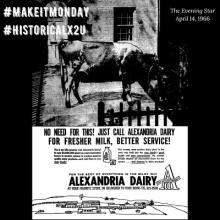
June 8, 2020
In the days before refrigeration was widely available, many people relied on their local dairy to deliver fresh milk and other dairy products to their door. In 1930, the Alexandria Dairy Products Company opened a new facility on the southwest corner of North Pitt and Princess Streets. The Alexandria Dairy was a leader in innovation and one of the first American producers to use square bottles.
Got Milk? Alexandria Did. Out of the Attic, Alexandria Times, July 3, 2013
Memorial Day
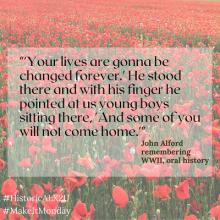
May 25, 2020
On Memorial Day, we honor those who made the ultimate sacrifice and remember them through their fellow service members. Just one percent of people in the US are active duty military and only 12 percent know a military veteran. Oral histories can help fill in this knowledge gap. Listen to Gilbert Mays and John Alford recount their service during World War II. After listening, make and wear a poppy in memory of those men and women who died while serving in the armed forces.
- Gilbert Mays served in the segregated Army during in the Quartermaster Corps and worked on the development of the Jeep. Read his oral history.
- John Alford was in high school when WWII began. He had to have his mother’s permission to enlist in the Navy at age seventeen. Read his oral history.
- Poppy Activity
Cup and Ball Toy
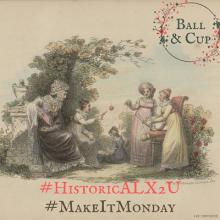
May 18, 2020
Toys preserved from the past help us understand what children played with – including many still enjoyed today! Often toys were made out of items found around the house, grew outside or crafted from wood. Try making a ball and cup toy of your own with things you find around your house.
Architecture
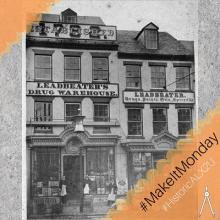
May 11, 2020
Architecture is the art or practice of designing and constructing buildings. Check out this street view of the Apothecary from the Museum’s collection and test your skills at spotting the shapes that make the building’s design. A quick-print activity for preschool and older. Bonus—the picture doubles as a coloring sheet!
Make a Column
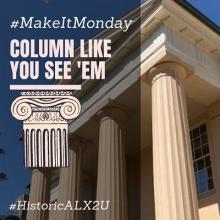
May 4, 2020
One of the most prominent features of some historic buildings is the column. But did you know that not all columns are the same? The most common are Doric, Ionic, and Corinthian. You can see these variety of styles at the Lyceum, Alfred Street Baptist Church and the Masonic Memorial, just to name a few. Grab a toilet paper roll and design one at home!
Make a Cockade
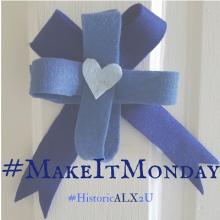
April 27, 2020
Throughout history, symbols and colors have been used to show support for a cause or country. One popular way was through a cockade. This rosette is a decorative knot of ribbons or bows worn on a hat, lapel, dress, or sleeve. In America, cockades were first used during the Revolutionary War and during the Civil War, they were a popular way of showing support in the North and South. Make a cockade for a cause of your choice and post a picture!
Chamber Pots and Archaeology
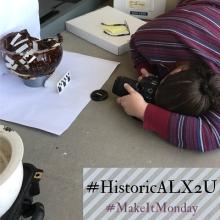
April 20, 2020
For this week’s #MakeItMonday, we’re talking toilets! Before indoor plumbing, chamber pots and privies were used. It wasn’t until the start of the Alexandria Water Company in 1852 that some affluent Alexandrians were able to install indoor plumbing in their houses. City archaeologists have found many examples of chamber pots dating from the mid-18th to late-19th century that range in style and decoration. Carefully piecing them back together can give clues to how many people were living in a home, how much money they may have had, and when indoor plumbing came to the area.
Put your artifact mending skills to the test by decorating your own chamber pots and then trying to piece them back together again. Just remember, don’t use them before you do! And as a bonus, play our never-before-seen “Spot the Pot” game.
Cabinets of Curiosity

April 13, 2020
For this week’s #MakeItMonday curate your own exhibit at home! Today’s museums have their roots in 17th century cabinets of curiosities, “Wunderkammer” in German. Mostly for the elite, these spaces contained select rare, odd, or interesting artifacts sometimes accompanied by interpretive labels. Museums evolved and became more accessible to the general public. Alexandria’s first museum opened in 1811 and displayed “relics of the greatest Alexandrians,” including George Washington’s clock, portraits of Jefferson and Lafayette, and Revolutionary War flags. Post a picture in the comments or use #HistoricALX2U to show us your unique creation!
Ice Cream

April 6, 2020
One of America’s favorite desserts is ice cream but did you know it was also a favorite dessert for our founding fathers and mothers? An expensive and labor-intensive treat, ice cream flavors ranged from vanilla to asparagus. Try your hand at making ice cream and exploring the science that makes it possible.
Patriotic Envelopes
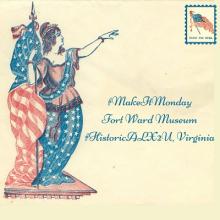
March 31, 2020
Fort Ward Museum has nearly 400 patriotic envelopes from the Civil War period in its collection! Soldiers and civilians during the war used envelopes and stationery decorated with a variety of images that supported their respective causes. New printing techniques of the time enabled these paper goods to be cheaply produced, making them affordable to many. Make your own!
Ship Biscuits
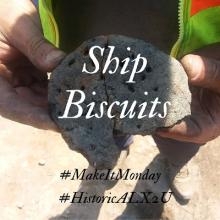
March 23, 2020
For this #MakeItMonday, test your 18th century baking skills with this recipe for ship biscuits! Archaeologists found a 200-year-old biscuit in the ground at the Robinson Terminal South Site (44AX235). Try your hand at this recipe and post a picture using #HistoricALX2U so we can see your creation.
#TourTuesday
Historic Alexandria Collections Online
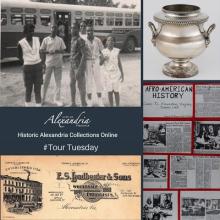
June 23, 2020
Alexandria has officially launched a new website to showcase a select portion of its vast collection online. From silver to samplers, photos to forks, over 30,000 items are held in OHA's museums. To offer a taste of this variety, tour the different collections available now. Can you find Carlton Funn’s posters on Crispus Attucks, John Gadsby’s wine cooler, and a student chorus photograph from Parker-Gray High School?
Fort Ward Ceremonial Gate
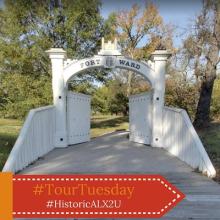
June 16, 2020
You may have walked through the gates of Fort Ward, but have you ever stopped to consider its symbolism? Examine the reconstructed ceremonial gate with Assistant Director Brian Briones, and discover why the gate includes cannonballs and a castle. Fort Ward is the best preserved of the system of Union forts and batteries built to protect DC during the American Civil War (1861-1865). Visit their website to learn more about the Fort itself, its Civil War history, and the African American community known as “The Fort” that grew after the war.
Tour the Lloyd House
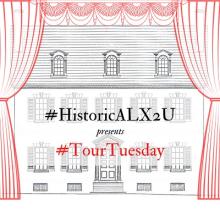
June 9, 2020
Constructed around 1796-1797, the Lloyd House is one of the best Georgian style buildings in Alexandria. It has seen a lot –as the home of John Wise (who built the City Tavern, now Gadsby’s Tavern Museum) and WAVES (the Navy Women’s Reserve during WWII). The building currently serves as the administrative offices for the Office of Historic Alexandria (OHA) and is a great rental space. See if you can find the beautiful garden, a doll house, and John Gadsby Chapman’s painting “Hagar Fainting in the Wilderness.”
Ship Timbers -- a Drone's View
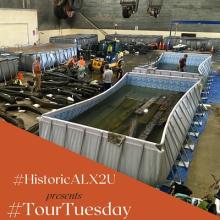
May 26, 2020
This week’s #TourTuesday takes us inside the city facility currently housing the remnants of three historic ships excavated along the waterfront. Over 1,000 ship timbers were found during archaeological work at 44AX235 (the Robinson Terminal South Site) and these are now stored in nine pools of water. In order to preserve these artifacts that were found wet, they need to be kept in water to prevent deterioration. Soar high above these tanks and spot the archaeologists at work in the pools in this drone footage.
Tour the Contrabands & Freedmen Cemetery
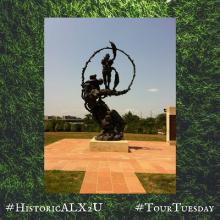
May 19, 2020
Alexandria Contrabands & Freedmen Cemetery served as the burial place for about 1,800 African Americans who fled to Alexandria to escape from bondage during the Civil War. The cemetery fell into disrepair, and by 1955, a gas station was built on the property. More than 30 years later, historical and archaeological research revealed the presence of the cemetery. The site was preserved as a memorial in 2014 to honor the memory of the Freedmen, the hardships they faced, and their contributions to our City. Look for the plaque highlighting the importance of education for Alexandria’s newly free community. Can you find a map of the site on the bronze plaques?
Tour the Lyceum Lecture Hall
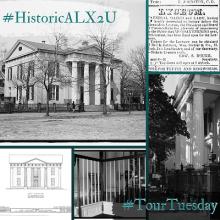
May 12, 2020
Constructed in 1839 as part of a public education movement, The Lyceum has also been a Civil War hospital, private home, and office building. The building was preserved thanks to local citizens and became the nation’s first official Bicentennial Center for the 1976 celebrations. The second floor Lecture Hall was originally a lecture, debate, concert, and meeting hall, and it still fills those needs for the community over 250 years later. Look for the exhibit about the building - try to find the original 1839 lock and a wallpaper fragment from the building’s renovation in 1858.
Tour the Bastion
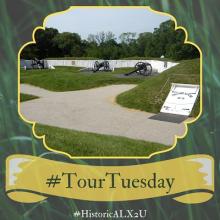
May 5, 2020
Boom! Let’s go to Fort Ward’s Northwest Bastion for #TourTuesday, where visitors can view an authentic reconstruction of a section of one of the largest Union forts in the Civil War Defenses of Washington. These earthwork walls were designed to absorb the impact of cannon fire. To preserve this landscape, no regular lawn mowing will do. Staff employ specialized mowing heights and procedures to ensure good turf coverage, essential to preventing erosion. Tour and find where artillerymen entered underground ammunition rooms, and imagine a soldier’s viewpoint – seeing Leesburg Turnpike and beyond to Bailey’s Crossroads!
Tour through Time
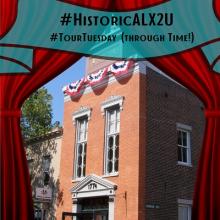
April 28, 2020
Looking at photographs over time can tell historians what changes occurred in a community. While they usually search through archives and research files for photos, you can conduct research from home with Google Street View! Focusing on Friendship Firehouse as our research topic, use the activity sheet to “tour” the streetscape around the museum over time. How many changes can you find? Can you guess when they were made?
It's Global Volunteer Month
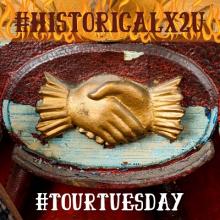
April 21, 2020
It’s Global Volunteer Month! In 1774 the Friendship Fire Company became the first of five volunteer firefighting companies established in Alexandria. Every household responded to fires with their own leather fire bucket to form bucket brigades, buying time for firefighters to gather equipment. Click through the Google 360 view – can you find the leather fire buckets and the two places in the museum that have clasped hands, the symbol of Friendship?
We love and miss all our museum volunteers! While our museums are closed, discover how you can help others in our community by checking out Volunteer Alexandria’s web page.
Freedom House Museum
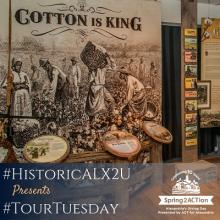
April 14, 2020
Freedom House’s basement exhibit examines the domestic slave trade through the stories of the men and women forcibly separated from their families and sold to the Deep South. Paired with details of the U.S. economy and the domestic slave trade businesses, museum visitors encounter the harsh reality of historic Alexandria's as a site of human trafficking. During Spring2ACTion (April 15, 2020) we raised funds to establish the building’s Preservation Fund. You can still donate to this worthy cause.
Alexandria History Museum at The Lyceum
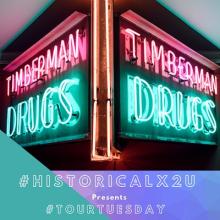
April 7, 2020
Venture through the first floor exhibits of Alexandria’s History Museum at The Lyceum for #TourTuesday. The two permanent galleries showcase centuries of the City’s history from prehistoric times to the present. The special exhibition gallery highlights Alexandria’s role in World War I. Click through the Google 360 view – try to find a punch bowl, neon sign, and WWI submarine chaser.
First Floor of Alexandria’s History Museum at The Lyceum 360 View
Alexandria African American Heritage Park
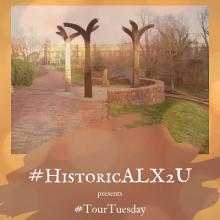
April 1, 2020
For this #TourTuesday, visit the Alexandria African American Heritage Park. Across Hoof’s Run from the Alexandria National Cemetery, this park was dedicated as a memorial to African American contributions to Alexandria’s history and encompasses the Black Baptist Cemetery established in 1885. Get close to artist Jerome Meadow’s bronze tree installation and see if you can find the names of African American citizens, businesses, and institutions that have made our City what it is today.
Tour the Alexandria African American Heritage Park
More Information about the Alexandria African American Heritage Park
Stabler-Leadbeater Apothecary Museum
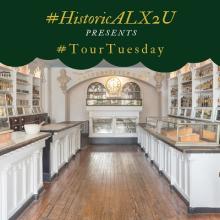
March 24, 2020
Some describe it like a step back in time or that they just apparated into a Harry Potter book. The Stabler-Leadbeater Apothecary Museum was a family-run business for over 140 years - from filling orders for the Washington family in the 18th century to providing medical supplies to army bases during WWI. Tour the entire first floor of the museum by clicking around the Google 360 view and try to find the pickle spices’ box and George Washington’s bust!
#WaterfrontWednesday
3D Ship Models
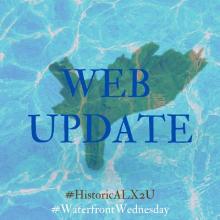
June 24, 2020
Researchers at Texas A&M University’s Conservation Research Lab are working hard on documenting three historic ships found at the Robinson Terminal South Site (44X235). They’ve made great progress on the 3D models for two of the vessels (Ships #2 and #3). These digital models will help us learn more about the size and shape of the ships and what they may have been used for in the past.
Robinson Terminal South Excavation and Ship Preservation Updates: June 2020 Update: Ship Documentation and Model Progress
What is a Shoreline?
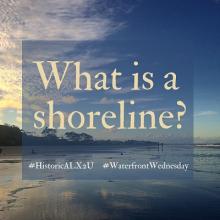
June 17, 2020
What exactly is a shoreline and where is it located? This seemingly simple question is actually very hard to answer. The shoreline is a fluid (pun intended) entity. On maps it is often depicted as a static line, unchanging in both time and space. In reality, a shoreline is shifting all of the time, subject to tidal forces, erosion, and precipitation. A mapmaker may depict a shoreline as representing any number of natural features—the bluff line, the high water mark, the low marker, and so on. Check out these brief research excerpts to further ponder the nature of shorelines in our city.
Historic Shorelines
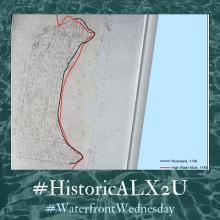
June 10, 2020
While a constant influence in Alexandria’s story past and present, the waterfront is also a natural feature that is always shifting. Starting this #waterfrontwednesday and for the next few weeks, we are going to ponder the nature of shorelines. For Alexandria, the Potomac River is the boundary between our city, the District of Columbia and the state of Maryland. While a boundary, it also served as a connection to the rest of the world. This natural element was, and still is, a critical part of the local economy, to be developed and shaped to meet the financial interests of the landowners and city.
Newspaper Advertisements
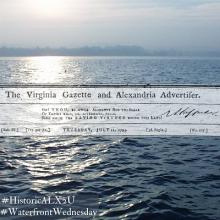
May 27, 2020
Newspaper advertisements also provide us with important information about Alexandria’s changing shoreline. A July 11, 1793 Virginia Gazette and Alexandria Advertiser notice describes the boundaries of a property south of the foot of Duke Street. This portion of Fleming’s wharf for sale “fronts the River Patowmack 55 ½ feet or thereabouts ... and extends back 110 feet or thereabouts.” Pairing this description with other documents that describe the eastern boundary of the property just to the west helps us understand how far land extended into the Potomac at this time and location. Historical research involves piecing together a lot of little nuggets of information to create a bigger picture of the past. Understanding when the Alexandria's shoreline was filled in will also help us better understand when the merchant ships were buried.
Early Documents Relating to When Ships at the Robinson Terminal South Site Were Buried
Court Cases
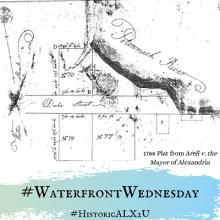
May 20, 2020
Court cases are also an important line of evidence for understanding how Alexandria’s shoreline changed in the 18th and 19th centuries. When disagreements arise over property boundaries, the courts often get involved to help solve the discrepancy. For example in the 1780s, Richard Arell disputed the location of the eastern boundary of Lot 69 where it abutted the western boundary of a City owned waterfront lot on Point Lumley. A few decades earlier the original eastern boundary of Lot 69 was the “very perpendicular and broken” bluffs above the Potomac. By the 1780s this bluff line appears to have been cut down and banked out, rendering the precise location of Lot 69’s eastern boundary unclear. This plat surveyed for Arell v. the Mayor of Alexandria shows both the public warehouse on the City owned waterfront lot and Lot 69.
Shoreline Deeds
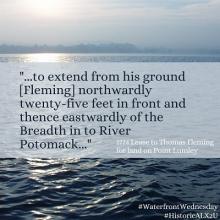
May 13, 2020
Besides maps, archaeologists and historians use deeds and leases to better understand when and how Alexandria’s shoreline changed. Maps capture specific points in time and often depict multiple blocks or the entire waterfront area. Deeds and leases can capture more refined information, helping them more accurately pinpoint who initiated the alteration of a waterfront lot and when. However, deeds can be incredibly frustrating because many of those for shoreline lots from the 18th century simply describe the eastern boundary of the lot as being the river, with no indication of how far out the property extended. This vague description of a waterfront lot’s boundaries is typical for the time.
Reaching for the Channel: Some Documentary and Archaeological Evidence of Extending Alexandria’s Waterfront - Steven J. Shephard
Historic Maps of the Shoreline
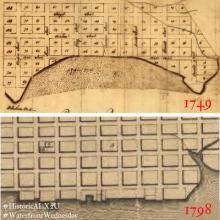
May 6, 2020
Alexandria’s shoreline has changed a great deal since the 18th century. Early residents filled in what was once a shallow cove between Oronoco and Duke Streets in order to make additional land and reach deeper water. So how do we know just how much land they made? One way is by comparing historic maps over time. This 1749 map shows the minimally altered shoreline of the city running in a gentle arc from West’s Point to the north down to Point Lumley. This 1798 map shows dramatic changes to the shoreline. In 50 years, Alexandrians created several blocks of new land along the Potomac River, changing both the physical landscape and the City’s economic prospects.
Waterlogged Organic Material
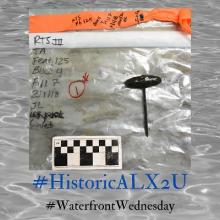
April 29, 2020
While assessing waterlogged organic material from the Robinson Terminal South Site (44AX235), archaeologists found this wood and metal gimlet or punch! This type of hand tool was likely used to drill small holes. It was also excavated in Feature 125, a roughly 42 by 25 foot, stone and wood foundation, along Wolfe Street. As a composite object made of both metal and wood, this object will require a little extra TLC during the conservation process to meet the needs of both material types.
A Wooden Trowel
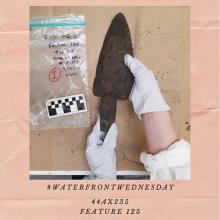
April 22, 2020
While assessing waterlogged organic material from the Robinson Terminal South Site (44AX235), we came across this amazing wooden trowel! It was excavated within Feature 125, a roughly 42 by 25 foot, stone and wood foundation, along Wolfe Street. The foundation was likely for a dwelling and dates to the 18th century or early 19th century.
Freedom House Research: 1830 Census Records
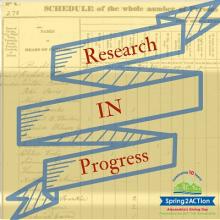
April 15, 2020
A valuable source for Freedom House and studying the domestic slave trade are government records like the Census. The 1830 US Census recorded 147 people at the Franklin and Armfield slave pen on June 1, 1830, including two white males, likely employees of the firm, and 145 enslaved people. When combined with evidence from newspapers and shipping records, it is possible these enslaved men, women, and children were held here temporarily before marching overland in a coffle to the Deep South. Visit our links below for more information on this research in progress. During Spring2ACTion we raised funds to work toward bringing more of these stories to light. We can still use your help!
Freedom House Research: Ship Manifest
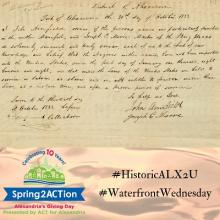
April 8, 2020
Historic Alexandria is raising funds to preserve the Freedom House Museum. Our staff has been working hard to research the complex history of this property and its role in the domestic slave trade. This work will allow us to interpret the site in a holistic and nuanced manner.
This ship manifest lists the names of 92 enslaved people sold by the firm of Franklin & Armfield in Alexandria to Isaac Franklin in New Orleans aboard the Brig Uncas in 1833. Once in New Orleans, these people were then sold again to farms and plantations throughout the South. From 1828 to 1837, Isaac Franklin and John Armfield operated what quickly became the country's largest slave-trading firm out of their Alexandria offices at 1315 Duke Street. After Franklin & Armfield, the site served as the headquarters for a series of slave-trading businesses until May 1861.
The Uncas, owned by Franklin & Armfield, left Alexandria on October 30th, 1833 and arrived in New Orleans four weeks later on November 29th. Manifests like these were required in accordance with the Act Prohibiting the Importation of Slaves of 1807, which outlawed the international slave trade in the United States. The act required the captain of each ship engaging in the still-legal domestic slave trade to provide a manifest listing the name, sex, age, height, and a racial description of each person being transported along with a statement swearing that the people listed were not imported into the United States after January 1st, 1808. They also provide information about the ship, the captain, and the buyer and seller of the enslaved people onboard.
Historic Alexandria has collected more than 100 ship manifests documenting voyages originating in the Port of Alexandria. Documents like this one reveal the scale of the domestic slave trade and record the names of some of the people affected by it.
Civil War Hospitals
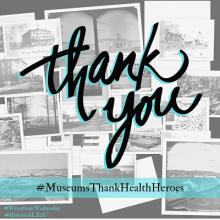
April 1, 2020
On today’s #WaterfrontWednesday, we send a huge thanks to all medical professionals working tirelessly to care for our community. As a port and rail hub, Alexandria adapted during the Civil War to meet the critical care needs of wounded soldiers from the front lines. One aide highlighted the state of things in 1862, “Their wounds had been well dressed & they said they were well cared, they have plenty of blankets, &...” Thank you for always rising to the challenge!
Archaeology on the Waterfront: Conservation of Waterlogged Wood and Leather
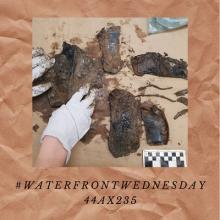
March 25, 2020
Earlier this year, archaeologists spent a #WaterfrontWednesday looking at soggy wood and leather, assessing this type of waterlogged organic material found at the Robinson Terminal South Site (44AX235). Working piece by piece, they have assigned conservation priorities to over 1,000 artifacts based on their provenience, level of integrity, and future research and exhibition value. This will guide future conservation plans for the material.
#ThrowbackThursday
Today in 1788
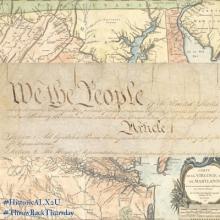
June 25, 2020
Today in 1788, Virginia became the tenth state to ratify the Constitution. Virginia was one of the largest states in terms of land and population, and Federalists (pro-Constitution) worried the nation could split if Virginia did not ratify. They had reason to worry. Patrick Henry + George Mason opposed the ratification because they believed the rights of the states + the people were not protected. Locally, Col. Charles Simms and Dr. David Stuart, who supported ratification, were nominated to represent Fairfax County, of which Alexandria was a part. Ultimately, the Virginia Convention voted yes, but only by 10 votes. As we consider the beginning words of the Constitution, “We the People,” what’s your wish for our future?
Pride Month
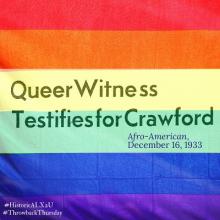
June 18, 2020
In the early 1930s, the prominent civil rights lawyer Charles Houston defended a man charged with murder in Loudoun. Not long after the crime, police recovered the victim’s car in Alexandria, and inside they found a note with the name and address of Hammond Nokes, a transgender woman from Herndon who also went by Hannah. Investigators determined that shortly before the murder, the suspect had boarded for a night at the Nokes home. During the trial, Nokes appeared in court wearing a dress, wig and jewelry, and testified about the defendant’s stay at her home. Some newspapers mocked Nokes, but her appearance on the witness stand, as an openly transgender African American woman, is remarkable for the time.
Hannah Nokes: A Trans Woman of Color in Northern Virginia, NoVa History Blog
Graduation
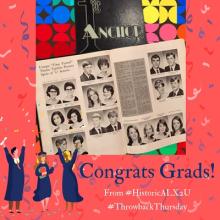
June 11, 2020
Graduation on Saturday will look a little different this year, but we are helping ACPS celebrate this #ThrowbackThursday by taking a trip back to 1967. Enjoy this yearbook from the Lyceum collection of Hammond High School, which operated from 1956 – 1971. It still operates today, but as one of Alexandria’s middle schools. This shift began when ACPS opened T.C. Williams as part of their desegregation efforts. While times may change, we always find ways to celebrate graduation! This Saturday, don’t forget to light up your home in red, white, and blue to show your support of the Class of 2020. Congrats seniors! #TCW2020 #HistoricALX2Ulink
Alexandrians remember Hammond, by Pam Cressey, May 1997
Murray-Dick-Fawcett House
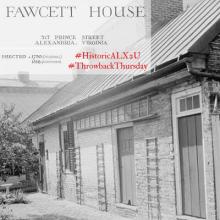
May 28, 2020
The Historic American Buildings Survey (HABS) began during the Great Depression in December 1933, when the National Park Service submitted a proposal for one thousand out-of-work architects to spend ten weeks documenting "America's antique buildings." The program soon became permanent, expanding into other media (photographs) and other types of surveys (landscapes, engineering-HAER). These records are a critical resource for preservationists. For example, these photos of the Murray Dick Fawcett House help city staff guide work at this historic site by helping us understand how this building changed over time.
Murray-Dick-Fawcett House, HABS Record - Library of Congress
Urban Renewal
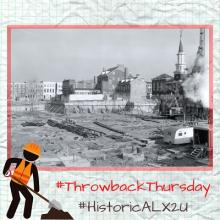
May 21, 2020
During the 1950s and 60s, urban renewal swept the country. This land development idea demolished historic structures in thousands of cities to make way for more modern buildings. Large sections of historic structures in Old Town were replaced with new construction. The entire north side 400 block of King was demolished to build Tavern Square, with Gadsby’s Tavern Museum remaining. This destruction sparked citizen action to preserve the remaining historic buildings in Old Town.
The Green Book
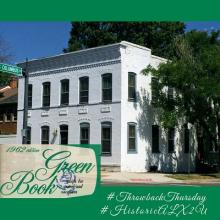
May 14, 2020
Did you see The Green Book movie? Alexandria had two sites in the Green Book – an annual guidebook for African Americans travelling during the Jim Crow era. The Green Book lists the J.A. Barrett Tourist Home at 724 Gibbon Street from 1938 – 1954 and the J.T. Holmes Tourist Home at 803 Gibbon from 1938 – 1960. Barrett’s home was torn down c. 1978, but Holmes’ remains. Both were in Alexandria’s oldest free black community, known as the “Bottoms.
The Green Book - Schomburg Center for Research in Black Culture, New York Public Library
A Preservation Activist
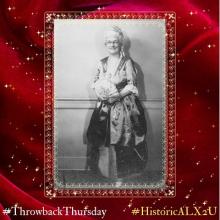
May 7, 2020
If you #VisitALX, you’re seeing the results of Rebecca Ramsay Reese. A preservation activist, she dreamed of a historic town people would want to live in and visit. She was determined. Even during the Great Depression, she was able to help Post #24 restore the famous City Hotel ballroom, part of Gadsby’s Tavern Museum. Her efforts transformed the community, one project at a time! Learn more about how she connected to the preservation story of the ballroom.
1970s Archaeology
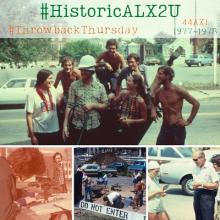
April 30, 2020
Check out those short shorts and huge moustaches! Alexandria’s archaeology program began in the 1960s and 1970s and, though people may no longer be sporting these fashion statements, some things haven’t changed. Staff still work hard to preserve artifacts and their context (a specific location in horizontal and vertical space).Work is still guided by theoretically engaged research questions and a plan of action. Tomorrow, May 1, 2020, begins Preservation Month and with it our first Facebook Live for #FactCheckFriday: “Ask an Archaeologist” with Alexandria Archaeology! Find out more about the archaeology program and tune in on Facebook at 11 a.m. every Friday in May.
In Memoriam: Joseph McCoy
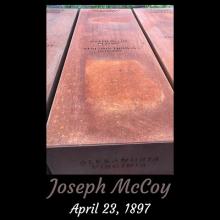
April 23, 2020
CONTENT WARNING
Today is the anniversary of the lynching of Joseph McCoy. He was murdered on April 23, 1897 at the corner of Lee and Cameron Street, just feet from what was then the police station and City Hall. Through EJI’s Community Remembrance Project, Alexandria is committed to restorative justice so that our community emerges stronger and more inclusive. To overcome racial inequality, we must confront our history.
First Movie Theatre for African-American Patrons
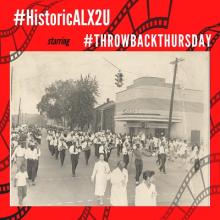
April 16, 2020
During segregation, the first movie theatre for African-American patrons in Alexandria was located at the NW corner of Queen and Henry Streets. In the fall of 1920, despite protests, Harry Bramow was issued a permit to enlarge an existing structure at 1101 Queen Street for use as a theatre for “moving pictures.” The theatre, originally named the Lincoln, opened soon after and the building still stands today.
Capitol Theatre once served as city’s sole black movie theatre. Out of the Attic, Alexandria Times, June 16, 2011
Soap
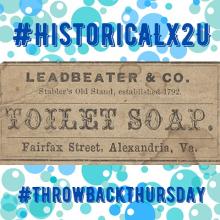
April 9, 2020
With the importance of hand-washing at the top of our minds, we should be glad we are able to do it with modern soap. Before the mid-19th century, soap was made mainly with animal fats and ash. Advances in the soap making process using palm or olive oils as well as an increased interest in more regular bathing led to the popularity of toilet or perfumed soaps like this one sold by the Leadbeaters in the 1860s.
Journal of Nicholas Cresswell
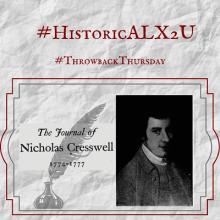
April 2, 2020
Nicholas Cresswell was an English Loyalist living in Alexandria between 1774-1777. Luckily for historians he recorded a journal of his experiences. On October 24, 1774 he wrote, “Everything here is in utmost confusion” as tensions with the British rose prior to the Revolutionary War. Help historians 200 years from now know what it was like in Alexandria in 2020.
American Legion Post 24
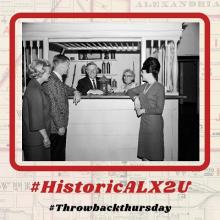
March 26, 2020
American Legion Post 24 was organized in 1920 and Gadsby’s Tavern was the first site that members considered when looking for a permanent home as a monument to veterans, a civic center, and museum. They always promoted the tavern as a “must-see” historic attraction in Alexandria during their operation. These “California tourists” are enjoying their history lesson.
Online Exhibit - Honoring Our Veterans: A Century of Service, The American Legion in Alexandria
#FactCheckFriday
Ben Holt's Legacy
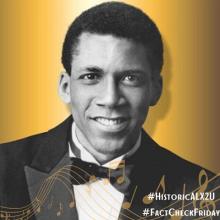
June 26, 2020
In 1987, DC native Ben Holt made his New York City Opera debut as Malcolm X at the world premiere of Anthony Davis’ opera, “X, The Life and Times of Malcolm X.” Throughout his career, Holt continued to celebrate his African American heritage through song with performances of Martin Luther King, Jr’s “I have a dream” speech set to music by Lee Holby, and Thomas H. Kerr’s composition of Paul Lawrence Dunbar’s “Riding to Town.” Ben passed away shortly after in 1990.
Thanks to the devotion of his mother (and longtime volunteer at the Alexandria Black History Museum), Mayme Holt, Ben’s legacy lives on, not only in the Ben Holt Memorial Scholarship at the Juilliard School, but also in his collection at the museum. It will be catalogued and scanned so it will be accessible through the Office of Historic Alexandria’s online collections website. Another Alexandria connection - Anthony Davis is the cousin of Audrey Davis, the director of the Alexandria Black History Museum.
Abridged Concert Performance of “X, The Life and Times of Malcolm X” in 2010 ~ New York Public Library, Schomburg Center for Research in Black Culture
Juneteenth
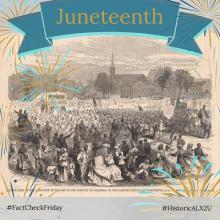
June 19, 2020
Although dates of emancipation vary from state to state, June 19th has come to be celebrated throughout the United States as a day to commemorate the end of slavery. Why this date? In 1865, General Granger announced that the enslaved people in Texas were free. Texans began celebrating Juneteenth in 1866; Alexandrians have celebrated since 1889 on different days of the year and in different months. Celebrate this important date by immersing yourself in local African American history online.
Loving Day
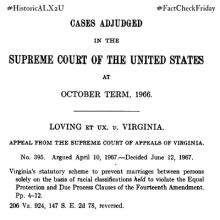
June 12, 2020
On June 12, 1967, attorneys Bernard Cohen and Philip Hirschkop received the news that the Supreme Court had decided the case Loving v. Virginia unanimously in favor of their clients Mildred and Richard Loving. The Lovings had brought the suit against the Commonwealth of Virginia for its ban on interracial marriage. Their law office was located in Suite 300 at 110 N. Royal Street.
Retrocession
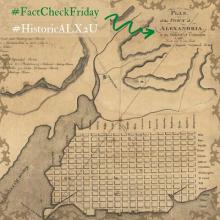
June 5, 2020
As the keepers of Alexandria’s history, Historic Alexandria is deeply aware that today is rooted in yesterday. Alexandria’s geographic location has impacted our community in various ways over time. For this #FactCheckFriday, was Alexandria ever part of DC? Look at the upper corner of this map issued in 1845. It documents an early period of the City’s history when it was still included within the boundaries of the Federal City. Only a year later in 1846, following a Federal vote permitting Alexandria to hold a referendum to retrocede, the land on the west bank of the Potomac once again became part of the Commonwealth of Virginia. Many complex and often interrelated factors influenced this move including Alexandria’s heavy economic dependence on the domestic slave trade and lack of voting rights in Congress. Learn more about these complex factors affecting this decision.
The south of the city starts to grow. Out of the Attic, Alexandria Times, May 26, 2016
Ask an Archaeologist
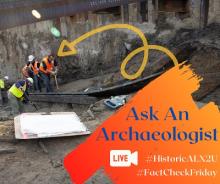
May 1, 8, 15, 22 and 29, 2020
For Preservation Month, join us on #FactCheckFriday with “Ask an Archaeologist” at 11 a.m. on FaceBook Live, on the Alexandria Archaeology or Historic Alexandria Facebook page. Look for "Videos" to watch these short films.
Masked Braddock Cannon
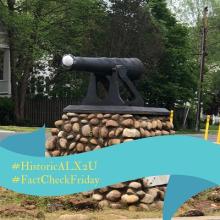
May 1, 2020
Special bonus #FactCheckFriday – why is there a cannon at the intersection of Braddock and Russell Roads? Besides helping stop the spread, this monument marked the path General Braddock and his expedition (including a young officer named G. Washington) took in 1755 to Pennsylvania to battle the French. More than 150 years later, the Colonial Dames of America worked to convert some of the cannons left behind into monuments to market this path west.
Braddock Cannon. Out of the Attic, Alexandria Times, February 5, 2009
Robinson Library
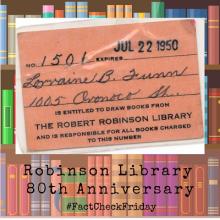
April 24, 2020
The building at the southwest corner of Wythe + N. Alfred Streets – museum, library, or both? Constructed less than a year after the 1939 Alexandria library sit-in, this building first opened as the Robert H. Robinson Library. While the facilities and resources were not equal to those at the whites-only branch, this place of learning was important to the African American community. It offered story hours for kids, an adult reading club, and a gathering space. Today marks 80 years since African American patrons could register for library cards. Now the building is the Alexandria Black History Museum—an important community resource, then and now.
Florida Water
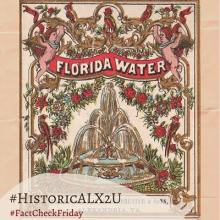
April 17, 2020
Florida Water – to drink or to make you smell good? This label is from the late 19th/ early 20th century when E.S. Leadbeater and Sons was in business at the Apothecary. Florida Water had an orange scent and its graphic was inspired by the Fountain of Youth, allegedly found in the Sunshine State. It could be used it in a wide variety of ways – from mouthwash to unisex cologne to room scent.
Gadsby's Tavern Ballroom
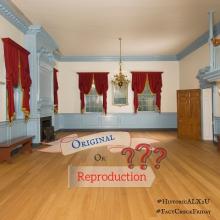
April 10, 2020
The ballroom at Gadsby’s is famous, but is it the original room that George Washington danced in for his birthday in 1798 and 1799? Because of its history, when the Metropolitan Museum of Art in NYC went looking for American decorative arts, they set their sights on Alexandria and the famous ballroom. The woodwork guests see today in Gadsby’s – reproduction from the 1940s!
Listen to a special podcast inspired by the ballroom at the Met
Spring2ACTion: Preserving the Freedom House Museum
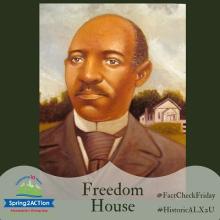
April 3, 2020
Yes, early giving does begin today for Spring2ACTion! Historic Alexandria is raising funds to preserve the Freedom House Museum, a building with deep ties to the domestic slave trade, so why that name? In 1988, then owner Ann B. Stone dedicated the building in memory of Lewis Henry Bailey. Separated from his family as a child, he was trafficked through this building before being sold to a Texas family. After gaining his freedom, he walked over 1,400 miles to Alexandria to reunite with his mother. Here, he became an active member of the community and his amazing life story inspired the building’s name!
Friendship Fire Company's Hose Reel Carriage
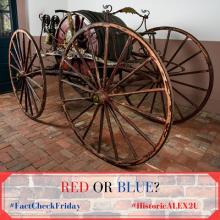
March 27, 2020
In 1858, the Friendship Fire Company commissioned a new hose reel carriage, but was it the typical fire red? Through paint analysis, we know it was actually first a glossy dark blue with gold leaf embellishments! Paint analysis looks at the layers of paint in cross-section to discover how they were layered over time. The carriage was painted red at a later date.